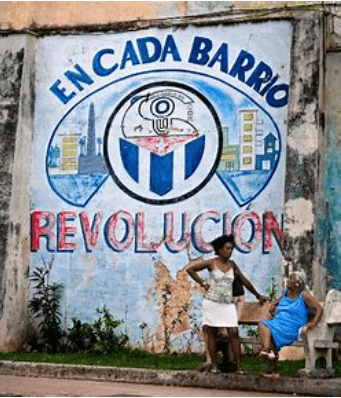
By Javier Herrera
HAVANA TIMES – Like every September 27 in Cuba, one more anniversary was celebrated this 27th of the creation of Committees for the Defense of the Revolution (CDR). It was the 63rd anniversary.
CDRs were founded on September 28, 1960, in Havana, Cuba, with the specific purpose of surveillance to identify individuals opposed to the Revolution. Later, they had the additional tasks of promoting blood donations, collecting raw materials, cleaning green areas on the block, etc.

CDRs are structured with one on every block. Several of these block CDRs make up a District, then a municipal, provincial and finally a national body, which is led these days by former Cuban 5 spy Gerardo Hernandez Nordelo.
Within the State’s repressive organizations, CDRs – which the Cuban State has tried to portray as an NGO -, have been a fundamental pillar which the Police, State Security (political police), counter-intelligence forces, workplace investigators and even party organizations feed off.

CDRs are the beatification of informing, of the State’s meddling in people’s personal lives. CDRs have been used to strictly control who lives where, with whom, who visits them, people’s quality of life and any other aspect of a citizen’s life that the State is interested in knowing and controlling. The main purpose of a CDR is to meticulously monitor every resident in the neighborhood, but especially those that are known to disagree with the regime or are openly hostile.
According to official statistics, approximately 8 million Cubans belong to the notorious organization. These statistics might paint a distorted image of the support inhabitants have for the Government if you don’t know that Cubans are automatically enlisted in the CDR’s ranks and there is no need for consent once you turn 14 years old.
Repressive actions carried out by CDRs include the despicable hate rallies, organized by State Security, but executed by fanatic CDR members in the neighborhood, to try and make it look like it’s the Cuban people who are repressing dissident acts. But careful, because many of these fanatics are the ones we see leaving the country and insulting the regime and seeking asylum, forgetting that they belonged to a repressive, and even terrorist, organization.
This organization, which takes accusations and snitching to a state policy level, wasn’t found in former social countries, which had networks of informers, but nothing that compared to a CDR. If we wanted to find something similar in the past, we’d have to draw a comparison with Hitler’s Sturmabteilung (Storm Troopers) or Benito Mussolini’s notorious Blackshirts in fascist Italy.

On September 27th, there is traditionally a block party, across the entire country. These celebrations are seasoned with a soup made with some bones or a pig’s head and root vegetables provided by the State itself (cooked in the middle of the street in huge pots in improvised wooden kitchens), some bottles of rum or beer from the State as well, and a cake with the organization’s logo. Most adults on the block would attend this party, some for the alcohol, others to dance and disconnect a little, lots for the soup and almost everyone so they wouldn’t be “marked” for not taking part in CDR activities. Being marked could stand in the way of a good job position and even your children being accepted into university or a specific school.
Very little or nothing remains today of an organization that was the most effective at controlling society. The Cuban people feared CDRs and only saw it as a nest of informers who they had to get on with, but who they also had to take care around and distrust. Many CDR leaders are publicly very “revolutionary” but are privately friends with the same dissidents they are responsible for monitoring, and they even warn them when a police body is asking after them.

This year, there was no party, just like in the past three years. But there were still best wishes and mentions in all of the regime’s propaganda apparatus. Messages sent by the regime talked to death about revitalizing CDRs, because they know they are dying and are inevitably damned. What used to be one of the pillars of the Cuban regime is now collapsing and there won’t be a trace left of this organization, which should have never existed, sooner or later.
Anyhow, with or without the Cuban people’s support, CDRs have reached their 63rd anniversary, an institution that only monitors and informs on residents nowadays, but even does these jobs poorly or incompetently. Let’s hope we never have to celebrate another anniversary like this one, a sad anniversary that celebrates the moment when they wanted (and almost managed) to turn an entire population into their neighbor’s traitor or snitch.
Read more from Cuba here on Havana Times.




